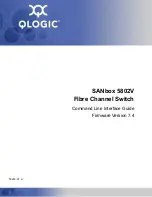
33
CHAPTER 4: Configuration
NOTE
Just as in DOS, the “?” wild-card character
represents a single character, whereas the “*”
character can represent a string of one or
more characters.
Usage Notes
Suppose Mary’s PC is connected to port #2. You can
specify port #12, which is connected to printer C, as
the selected output for port #2. Mary’s print jobs will
then go to printer C until she chooses another
printer (for example, with the UCTP, MPSDOS, or
MPSWIN).
If you enter just the wild-card character as the
selected output, all jobs from the input port go to
the first available output port, whether parallel,
serial, or serial bidirectional, unless the user specifies
otherwise. But it might be a better idea to limit the
output to a certain peripheral or peripheral type that
suits the input port’s user.
To specify the desired output port, enter its name
or number and press Enter. You cannot specify input
ports or ports that have beeen restricted with the
Restriction
parameter (see the description of this
field on page 37) as selected output ports.
If all available selected output ports are busy,
the job remains in the buffer until one becomes
available.
Содержание PI750A
Страница 119: ...111 APPENDIX A Cable Pinouts IBM AT to MPS VIII DB9M to DB25M...
Страница 173: ...NOTES...
















































